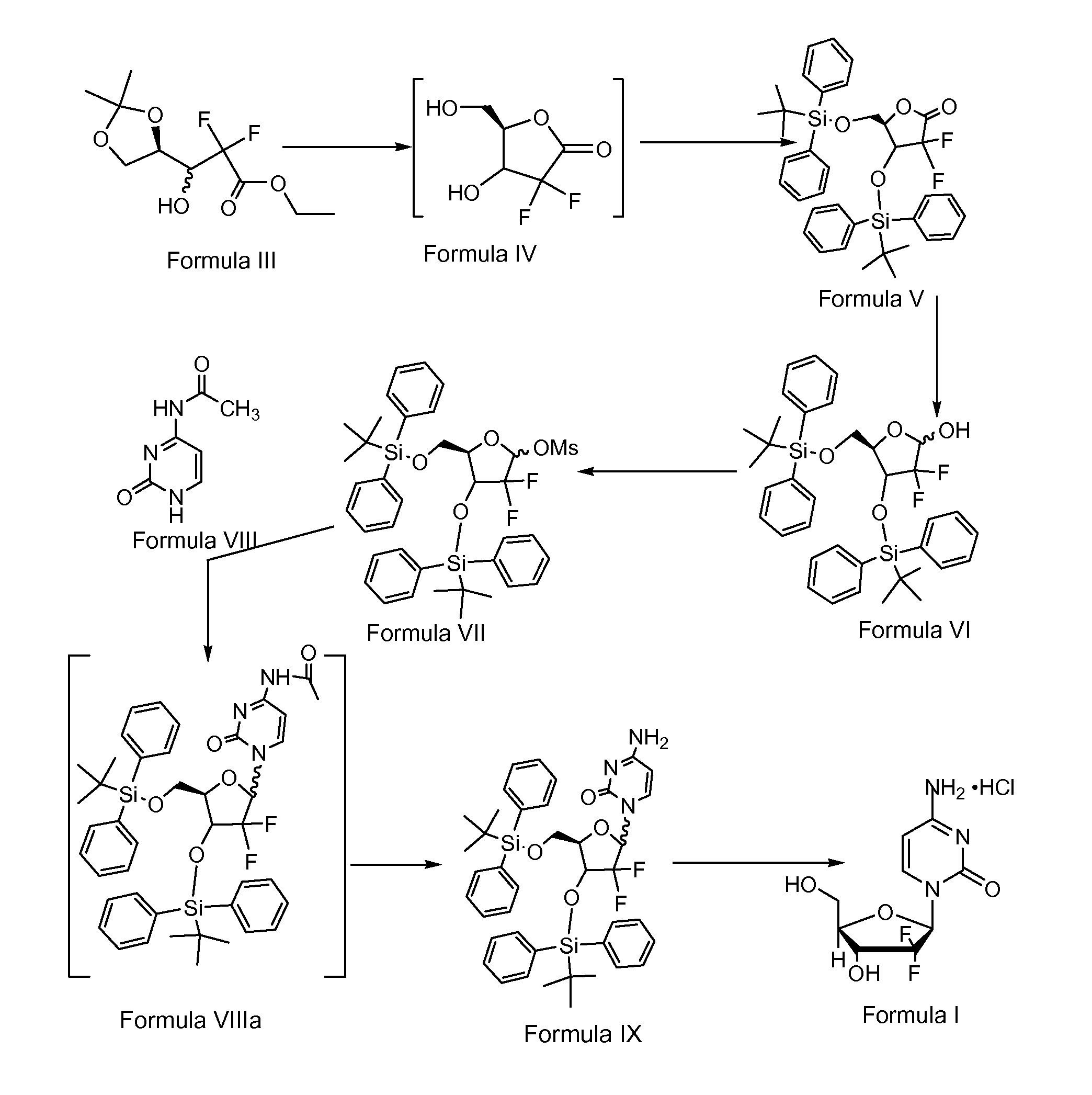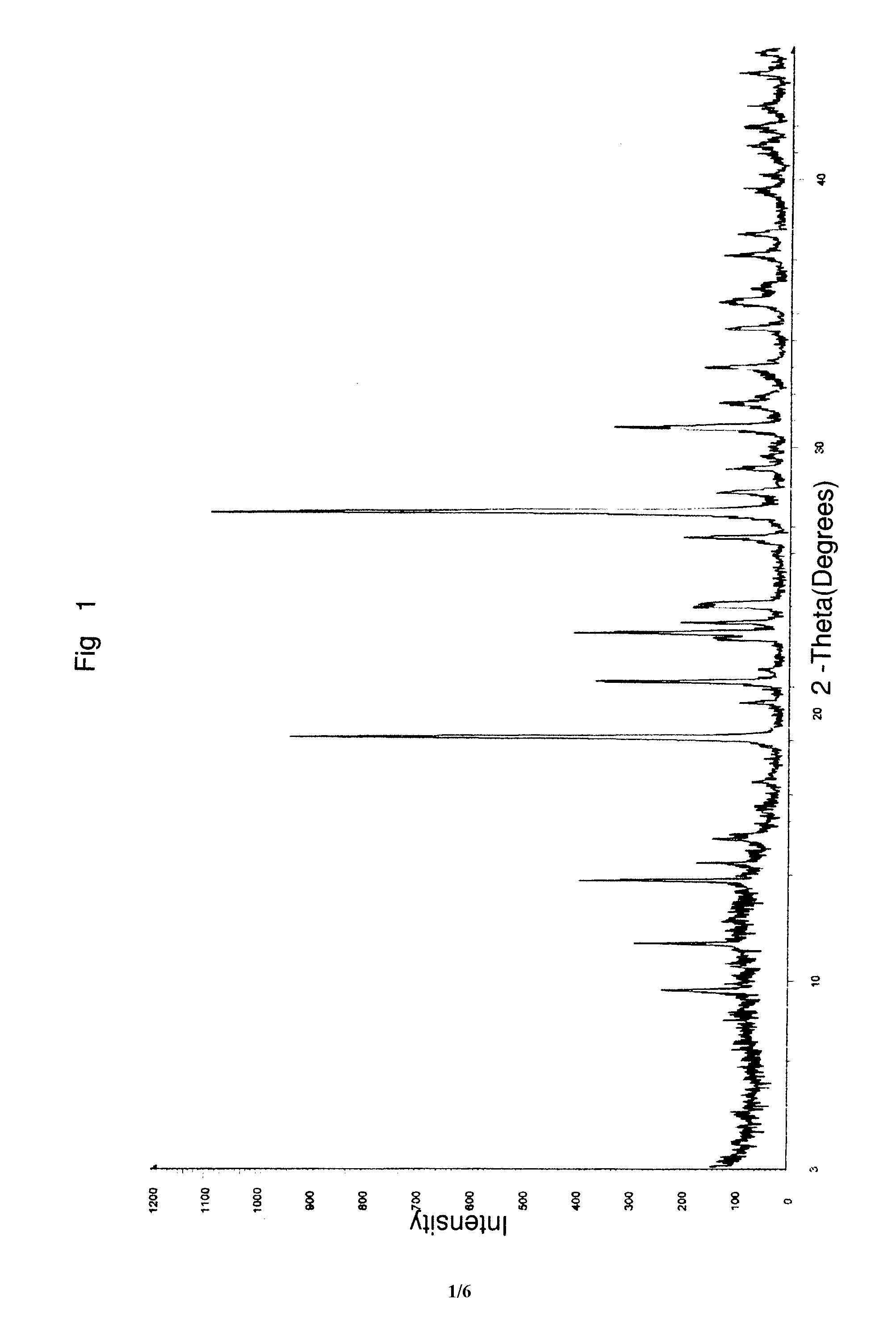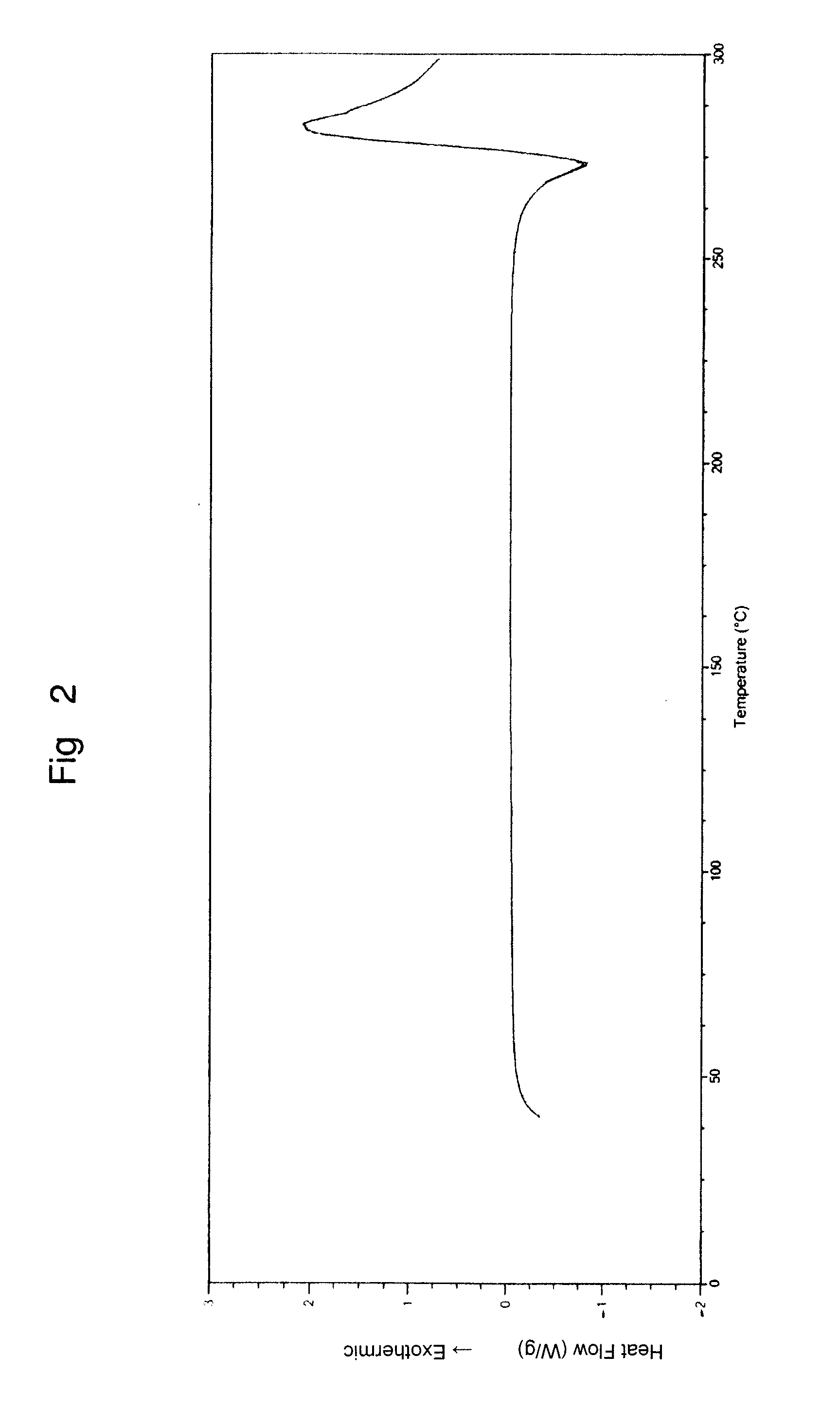Preparation of gemcitabine
a technology of gemcitabine and a compound is applied in the field of process for the preparation of gemcitabine, which can solve the problems of lactone ring, lactone revert, hydrolyzing agent,
- Summary
- Abstract
- Description
- Claims
- Application Information
AI Technical Summary
Benefits of technology
Problems solved by technology
Method used
Image
Examples
example 1
PREPARATION OF 3,5-BIS(TERTIARY-BUTYL DI PHENYL SILYLOXY)-2-DEOXY-2,2-DIFLUORO-1-OXORIBOSE (FORMULA V)
[0120]100 g of ethyl 2,2-difluoro-3-hydroxy-3 (2,2-dimethyldioxalan-4-yl)propionate of Formula III, 1000 ml of methanol and 10 g of iodine were charged into a clean and dry round bottom flask followed by stirring overnight at 27° C. A 10% aqueous solution of sodium thiosulphate (22.5 g of sodium thiosulphate dissolved in 225 ml of water) was added to the above reaction mixture at about 27° C. over about 30 minutes followed by distillation of solvent from the reaction mixture at about 80° C. Subsequently 500 ml of toluene was charged into the obtained reaction mixture and then distilled off under atmospheric pressure at 95° C. The above step was repeated 5 times until the boiling point temperature of the reaction mixture was 110° C. Then the reaction mixture was distilled under a vacuum of 650 mm Hg at 50° C. to afford the 2-desoxy-2,2-difluoro-1-oxoribose compound of Formula IV as a...
example 2
PREPARATION OF 3,5-BIS(TERTIARY-BUTYL DI PHENYL SILYLOXY)-2-DEOXY-2,2-DIFLUORORIBOSE (FORMULA VI)
[0124]243 g of 3,5-bis(tertiary-butyl di phenyl silyloxy)-2-deoxy-2,2-difluoro-1-oxoribose of Formula V and 2400 ml of tetrahydrofuran (THF) were charged into a round bottom flask under a nitrogen atmosphere at about 27° C. with simultaneous stirring. The reaction mixture was cooled to −45° C. and 192 ml of sodium bis(2-methoxyethoxy) aluminum hydride (Vitride) was added to above reaction mixture. The obtained reaction mixture was stirred for about 1 hour, 45 minutes and checked by thin layer chromatography to confirm the completion of the reaction. After completion of the reaction, 486 ml of saturated ammonium chloride solution was charged into above resultant reaction solution at about −45° C. and the temperature raised to 27° C. The obtained suspension was filtered and the aqueous layer from the filtrate was extracted with 1215 ml of ethyl acetate and 486 ml of brine solution followed...
example 3
PREPARATION OF 3,5-BIS(TERTIARY-BUTYL Di PHENYL SILYLOXY)-1 METHANE SULFONYLOXY-2-DEOXY-2,2-DIFLUORORIBOSE (Formula VII)
[0127]245 g of 3,5-bis(tertiary-butyl di phenyl silyloxy)-2-deoxy-2,2-difluororibose of Formula VI and 2450 ml of dichloromethane were charged into a round bottom flask under a nitrogen atmosphere with simultaneous stirring. The reaction mixture was cooled to 0° C. and 55.5 ml of triethylamine and 18.6 ml of methane sulfonyl chloride were charged to the above reaction mixture. The reaction mixture temperature was allowed to rise to 27° C. and was stirred for about 2.5 hours. Reaction completion was checked using thin layer chromatography. 1225 ml of water was charged into above resultant reaction mixture and the two layers were separated. The resultant organic layer was distilled completely at 45° C. under vacuum to get a gummy solid. Petroleum ether was charged to above obtained gummy solid and cooled to 2° C. The obtained suspension was stirred for 3 hours and fi...
PUM
| Property | Measurement | Unit |
|---|---|---|
| temperatures | aaaaa | aaaaa |
| temperature | aaaaa | aaaaa |
| temperatures | aaaaa | aaaaa |
Abstract
Description
Claims
Application Information
 Login to View More
Login to View More - R&D
- Intellectual Property
- Life Sciences
- Materials
- Tech Scout
- Unparalleled Data Quality
- Higher Quality Content
- 60% Fewer Hallucinations
Browse by: Latest US Patents, China's latest patents, Technical Efficacy Thesaurus, Application Domain, Technology Topic, Popular Technical Reports.
© 2025 PatSnap. All rights reserved.Legal|Privacy policy|Modern Slavery Act Transparency Statement|Sitemap|About US| Contact US: help@patsnap.com



